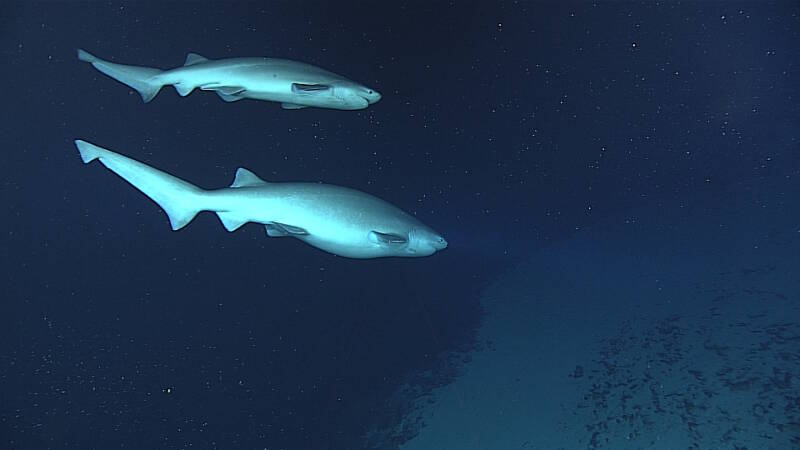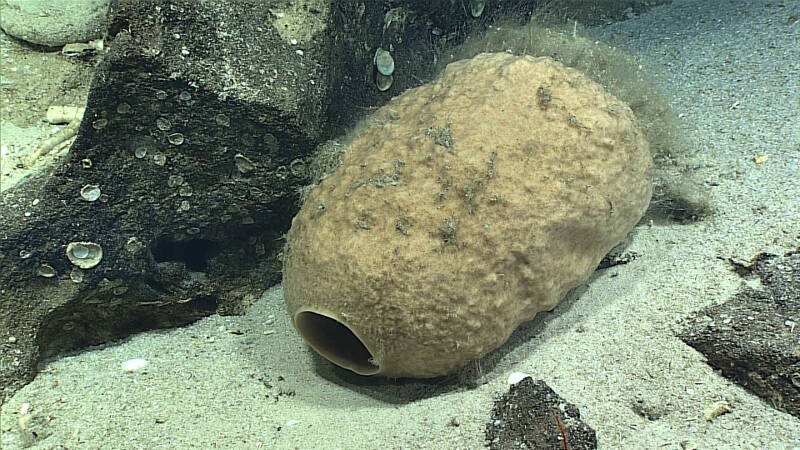Today's dive started around 544 meters, heading southwest up a steep slope along the northeast side of Pao Pao Seamount and revealing exciting insights into the fish and invertebrate communities within the Tokelau seamount chain. The substrate was composed of exposed hard rock with areas of thick sediment drape. Numerous pteropod shells were found within the sediment. Heading upslope, there were several species of fish, including deepwater cardinalfish, scorpionfish, two species of sharks, spikefish, green spotted duckbill fish, groppo, zeniontids, boarfish, Randall's snapper, and an unknown black and white-striped fish. The slope was populated with several coral species, including colonial stony corals, solitary cup corals, black corals, bamboo whips with polyps loaded with eggs, and large octocoral colonies covered with associates. Two octocoral samples were collected. A large stony coral colony was observed growing in a bush shape around the dead "black" coral skeleton aged at about 1,200 years old, based on the 10-centimeter diameter of the base. Other invertebrates observed included sea stars, large barrel sponges, chirostylids, and feather stars.
Moving onto the summit, scientists observed changes in substrate type, from steep rock ledges and sedimented slope to relatively flat carbonate pavement, interspersed with pits and caves. The fauna included sea stars, octocoral colonies, and pencil urchins. A pencil urchin was observed feeding on an octocoral and several colonies had visibly bare skeleton on the branches, indicating recent predation. Octocoral tissue with associates was collected for identification. Several hermit crabs had gastropod shells, but one was observed with an anemone "shell." Multiple large and small boarfish were associated with the pits and depressions, potentially using them as refuges from the swift currents. Other fish encountered included eight barred grouper, deepwater snappers, amberjack, deepwater stingray, yellow eels, scorpionfish, groppo, hogfish/wrasses, and left-eye flounder. Some of the fish observed represent important commercial fish for the region. Invertebrates at the summit included an octopus, quill worms, brachiopods, and yellow colonial stony corals. At the summit, we saw what looked like fishing line, which represented the first marine debris observed on the dives thus far. Throughout the dive, there was an obvious lack of precious corals present, in contrast to previous CAPSTONE dives within Northwestern Hawaiian Islands.

